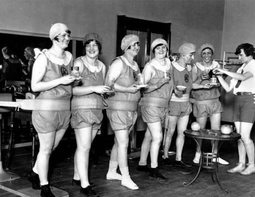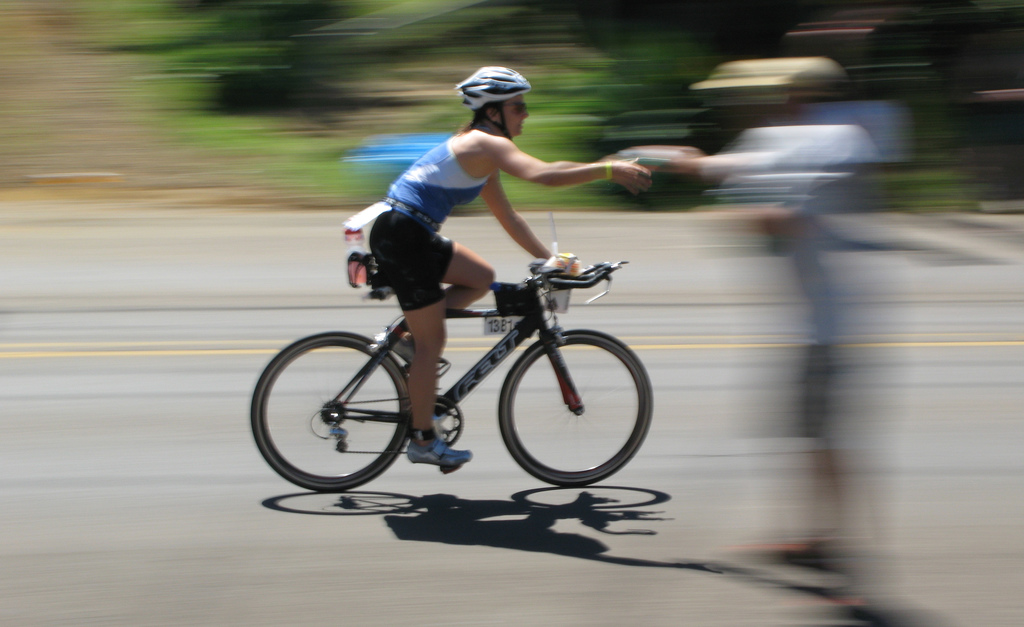Spot reduction: Your top 6 questions answered

Do you have a garage full of ThighMasters, Ab Flyers, Ab Circles, Ab Coasters and Ab Rockers? Are you concerned about thunder thighs, love handles, man boobs, saddlebags, potbellies or cankles?
Everyone has his or her problem area (or areas). Thanks to the concept of spot reduction, we’ve witnessed decades of fabulous (or should that be flabulous?) gizmos such as the Astro-Trimmer, Abflex and, of course, those classic vibrating belts.
What can you do about those flabby arms or muffin tops? Does spot reduction work? Here are answers to the top six most common questions.
1. What is spot reduction?
Spot reduction is the idea that you can lose fat from a specific part of your body, especially if you exercise the area. Some people think spot reduction means that when you exercise a particular area, the fat in that area will turn to muscle. Unfortunately this is not medically possible — it would be like turning oranges into apples.
The concept of spot reduction also implies that the muscle tissue and fat tissue in a particular part of your body engage in some sort of metabolic pillow talk with each other. For example, if you do sit-ups, then ideally, your abdominal muscles would selectively use the fat that blankets them for energy. Although many cells communicate with each other in numerous intimate ways, there’s still a language barrier in this regard.
2. Can you spot-reduce?
No. If spot reduction worked, there would be a lot of lopsided people walking around. Think of anyone who uses one side of his or her body or one limb much more than the other side. Pitchers, quarterbacks and trombone players come to mind. If spot reduction worked, a player’s dominant arm would have much less fat than his or her opposite arm.
Tennis players are a perfect example. In a classic study, researchers examined the arms of players. Although the dominant arm had a greater girth due to more muscle mass than the opposite arm, there was no difference in skinfold fat thickness between the arms. For further proof, researchers asked a group of individuals to do a total of 5,000 sit-ups over 27 days. (That’s about 185 sit-ups a day.) Fat biopsies were taken from the participants’ abs, buttocks and upper backs before and after the exercise program. The fat decreased the same amount in all three areas, demonstrating that no spot reduction occurred.
3. What is fat and what is it good for?
Fat is made up of individual fat cells called adipocytes. They are just one type of cell, along with muscle cells, nerve cells, bone cells, liver cells and numerous others. A person’s total number of fat cells is thought to be determined by puberty. After that, as you gain and lose weight, the size of these cells swells or shrinks.
Some fat is good. Odds are you are either sitting on fat (your tush) or standing on it (padding in your feet) as you read this. Fat protects your internal organs, serves as an energy warehouse, insulates and helps regulate body temperature. Fat cells secrete numerous proteins and hormones that can influence blood pressure, immune function and blood sugar (glucose) levels.
4. Can you control the location of your fat?
Fat is like real estate — we’re all concerned with location, location, location. And location is mainly determined by the two G’s: gender and genes. To verify this, take a good long look at your parents and siblings, and then take a good long look at yourself in the mirror. Scary, isn’t it?
5. Does location matter?
Ab-solutely. There’s a growing body of scientific evidence that links the location of your fat to your health. Fat tends to be located either around the middle or center of the body (the classic apple shape) or peripherally on the arms, hips, and thighs (pear shape). Studies continually show that people with apple shapes are at much greater risk than those with pear shapes for numerous conditions, such as heart disease, type 2 diabetes and liver disease.
6. Can anything be done about thunder thighs and beer bellies?
The great news is yes, you may be able to shore up an area. And if you can reduce belly fat, you may decrease your risk of associated health problems. But it’s not as simple as using products that you’ve ordered on late-night TV for eight minutes a day. It takes a little bit of sweat combined with good nutritional habits. Repeat after me this mantra we all know by heart (and need to take to heart): Move more, eat less.
The first step is to engage in regular physical activity, especially as outlined in the new Physical Activity Guidelines. Engage in some type of strength training two or more days a week. You’ll tone up your muscles, strengthen your bones and burn calories. Buffing up your muscles, however, won’t help if you still have a layer of fat providing a cloak of invisibility over them.
So the companion step is to divest yourself of your extra pounds by also engaging in regular moderate-to-vigorous endurance (aerobic) activity at least 60 to 75 minutes a week. Lastly, keep an eye on what you eat. You know the drill: Burn more calories than you consume.
Your muscles require fuel to work, and fat is a great source. When you exercise, chemicals are released in your bloodstream that travel to fat cells and trigger them to break down units of fat to be burned for energy. Unfortunately, we can’t control which fat cells respond to the chemical signals. However, a general rule of thumb seems to be “last in, first out.” That is, wherever you’ve most recently added the insulation is generally the first place it’s lost. Then eat in moderation so that you aren’t refilling your fat cells to overflow.
What gizmos do you have in your garage? What late-night infomercials made you pick up the phone? Did you use any of the gadgets more than once? Some of these items can legitimately be incorporated into your exercise routine, while others probably need to be sprung during spring cleaning, sold at a yard sale or put up for adoption on eBay.











Trackbacks & Pingbacks
[…] posts Americans Jump Online for Exercise Information Spot reduction: Your top 6 questions answered Twelve Everyday Health […]
Leave a Reply
Want to join the discussion?Feel free to contribute!